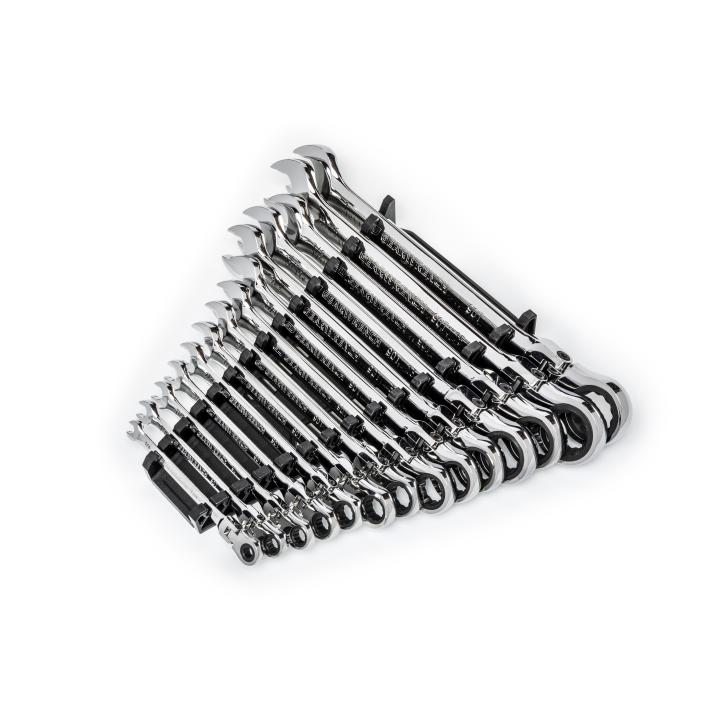Advantages of the gear wrench flex head ratchet
The flex head ratchet is one of the most common types of ratchets available today. This tool has several advantages, but none are more important than the ability to handle tight spaces. Whether you’re working on a car or a boat, you can use it to turn the fastener. The enclosed head and flex head design of the wrench allow you to do this with a minimum of risk.
The flex head ratchets have an infinite number of teeth and a smooth, rounded finish. The 90-tooth ratcheting action allows you to reach very tight areas with little backdrag. The long pattern beam is also a good way to increase leverage. The wrench comes with a matching wrench organizer to keep your tools in order. There’s no need to search through dozens of tools, as the flex head ratchets come with a convenient labeled size.
The flex head ratchet is made with high-quality chrome and is lightweight. The flex head ratchet rotates in both directions, so you can reach tight and loosening spots without bending or twisting the fastener. The open end is made of chrome-plated alloy steel, and the 12-point ratcheting wrench provides optimal grip on nuts and bolts. Whether you’re working on a car, truck, or boat, this wrench is an essential tool for every garage.
A gear wrench with a flexible head enables you to reach fasteners and bolts that are difficult to access. This tool is composed of twelve pieces. The head is designed to provide maximum flexibility and is available in various sizes. The tool is easy to use and provides a high degree of flexibility, making it ideal for a wide variety of applications. It is also durable and lightweight, making it an excellent tool for heavy-duty jobs.
This new tool is designed to make the process of tightening and loosening fasteners easier and more convenient. Its combination flex head design allows the wrench to be angled up to six degrees, ensuring that it will provide the optimal grip. It is made of alloy steel and has a chrome finish. The 12-point flex head is highly adjustable and provides better access and clearance. The wrench is also available in a variety of sizes and is available in both standard and metric versions.
A metric version of the original ratcheting wrench is the GearWrench Metric 180 Degree Flex Head Wrench. This wrench has a patented ratcheting box end. With a ratcheting box end, you need only five degrees of rotation to move a fastener, compared to 30 degrees of rotation required by standard wrenches. It is designed to be durable and versatile enough for all types of jobs.
The 120XP Flex Head Ratchet has a longer handle for increased reach. The 60-tooth gear alternately engages double-stacked pawls for 120 positions. The 120XP ratchet is available in 1/4″ drive sizes and with a full polish grip. It comes with a flush-mounted on/off switch. The tool also features an enclosed head and exceeds ASME strength requirements.
The knurled ridges at the box end of the gear wrench give you a clear visual reference to which side of the drive is the one to engage with the fastener. The ridges are also useful when you are orienting a wrench for a specific fastener. The ridges on the drive end also prevent the wrench from stripping the fastener if it’s flipped over.
Choosing a ratchet with a finer tooth count will make the tool more effective. A finer ratchet won’t be as strong as a coarse ratchet, but it will not break under the pressure of a heavy task. A finer ratchet will be more effective for small tasks, while a coarser one will help in tight situations. When selecting a gear wrench, you can select a finer one or a coarser one, depending on your preferences and your work environment.
Drive size is another consideration. This determines the type of jobs that a gear wrench flex head ratchet can handle. A 1/4-inch-drive ratchet will not rip off lug nuts, while a 1/2-inch-drive tool will be too large to fit in a tight space. Generally, the most common size is a 3/8-inch-drive tool.

